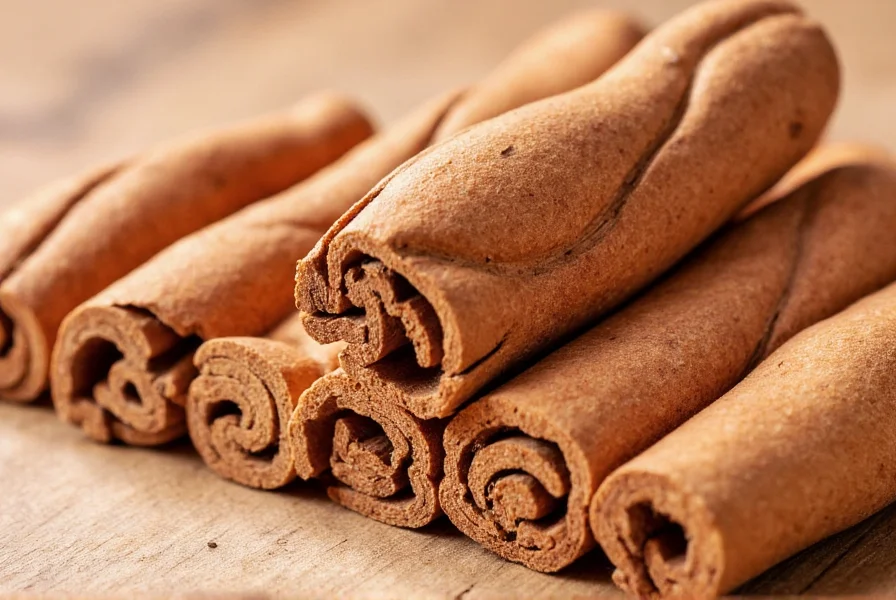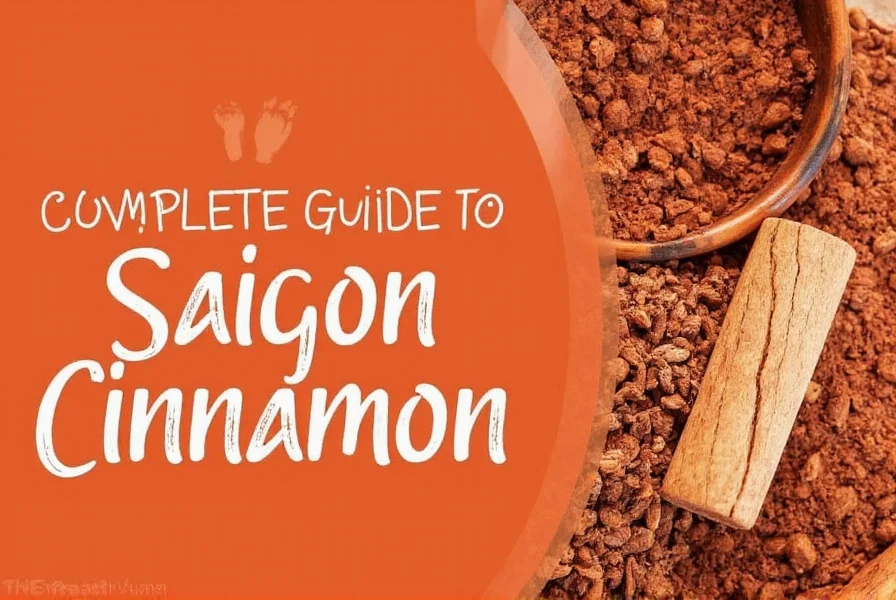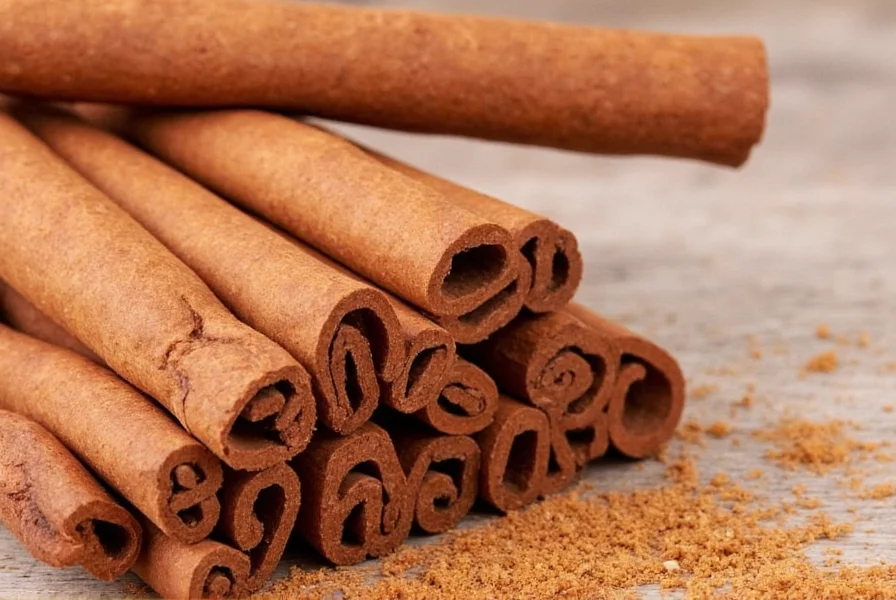Saigon cinnamon, also called Vietnamese cinnamon or Vietnamese cassia, represents one of the most prized cinnamon varieties worldwide. This exceptional spice originates from the Cinnamomum loureiroi tree, primarily cultivated in the Central Highlands of Vietnam, particularly in Quang Ngai province. Unlike common supermarket cinnamon (typically Chinese cassia), Saigon cinnamon offers a more intense aromatic experience with its higher concentration of essential oils.
Botanical Classification and Origin
The Cinnamomum loureiroi species belongs to the Lauraceae family, sharing botanical relations with other cinnamon varieties but maintaining distinct genetic characteristics. Historical records indicate Vietnamese cinnamon cultivation dates back centuries, with French colonists documenting its production in the 19th century. The name "Saigon cinnamon" emerged from the traditional shipping point for this spice, though it's actually grown in Vietnam's central regions rather than near Ho Chi Minh City (formerly Saigon).
How Saigon Cinnamon Differs From Other Varieties
Understanding the differences between cinnamon types helps appreciate Saigon cinnamon's unique qualities. The market primarily features three varieties:
| Cinnamon Type | Scientific Name | Cinnamaldehyde Content | Coumarin Level | Flavor Profile |
|---|---|---|---|---|
| Saigon Cinnamon | Cinnamomum loureiroi | 25-30% | High (6,000+ ppm) | Strong, sweet, complex with spicy notes |
| Chinese Cassia | Cinnamomum cassia | 70-80% | High (2,500+ ppm) | Harsh, one-dimensional, overly spicy |
| Ceylon Cinnamon | Cinnamomum verum | 50-60% | Very Low (80 ppm) | Mild, delicate, subtle sweetness |
The key distinction lies in Saigon cinnamon's exceptional balance of sweetness and heat. While Chinese cassia often presents as one-dimensionally spicy, Saigon cinnamon delivers a more nuanced flavor experience with pronounced sweet notes that complement its characteristic warmth. This makes it particularly valuable for both sweet and savory applications where depth of flavor matters.

Physical Characteristics and Identification
Saigon cinnamon stands out visually with its distinctive physical properties. The bark forms thick, tightly rolled quills with multiple layers, creating a robust structure that maintains integrity during processing. These quills typically measure 6-12mm in diameter—significantly thicker than Ceylon cinnamon's delicate, paper-thin layers. When broken, authentic Saigon cinnamon reveals a reddish-brown interior with fine vertical striations.
To verify authenticity, examine these characteristics:
- Thick, multi-layered quills (not single-layer)
- Intense, sweet-spicy aroma when crushed
- Deep reddish-brown color (lighter than Chinese cassia)
- Smooth texture without excessive grit
- Oil droplets visible when broken (indicates high essential oil content)
Culinary Applications and Flavor Profile
Chefs and home cooks prize Saigon cinnamon for its complex flavor profile that enhances both sweet and savory dishes. Its higher cinnamaldehyde content (25-30% compared to Chinese cassia's 70-80%) creates a more balanced sweetness with less harshness. The flavor unfolds in layers: an initial sweet note followed by warm spice and subtle citrus undertones.
Professional bakers consider Saigon cinnamon ideal for:
- Apple pies and fruit crisps (enhances natural sweetness)
- Spice cakes and holiday cookies
- Cream-based desserts like ice cream and custards
- Breakfast dishes including oatmeal and French toast
- Savory applications like braised meats and rice dishes
When substituting Saigon cinnamon in recipes calling for regular cinnamon, use approximately 25% less due to its more potent flavor. The spice's essential oils are volatile, so adding it toward the end of cooking preserves maximum flavor impact.
Health Considerations and Nutritional Profile
Saigon cinnamon contains bioactive compounds including cinnamaldehyde, eugenol, and linalool, which contribute to its potential health benefits. Research suggests cinnamon may support healthy blood sugar metabolism and provide antioxidant benefits. However, Saigon cinnamon contains higher coumarin levels (approximately 6,000 parts per million) compared to Ceylon cinnamon (about 80 ppm).
The European Food Safety Authority recommends limiting coumarin intake to 0.1 mg per kilogram of body weight daily. For most adults, this translates to approximately 1-2 teaspoons of Saigon cinnamon daily. Those with liver conditions or taking certain medications should consult healthcare providers before regular consumption.

Purchasing and Storage Guidelines
When selecting Saigon cinnamon, look for products labeled Cinnamomum loureiroi or specifically "Saigon" or "Vietnamese" cinnamon. Reputable suppliers often provide origin information and may include essential oil content percentages. Whole quills maintain freshness significantly longer than ground cinnamon—up to 3-4 years versus 6-12 months.
Proper storage preserves Saigon cinnamon's volatile oils:
- Store whole quills in airtight glass containers away from light
- Keep in a cool, dark pantry (not near the stove or oven)
- Grind only what you'll use within a few weeks for maximum flavor
- Avoid plastic containers which can absorb essential oils
Quality Saigon cinnamon should exhibit a strong, sweet aroma when the container is opened. If the scent has faded significantly, the essential oils have likely evaporated, reducing both flavor impact and potential health benefits.
Common Misconceptions About Saigon Cinnamon
Several myths persist about this premium spice. First, despite marketing claims, "true cinnamon" refers specifically to Ceylon cinnamon (Cinnamomum verum), not Saigon variety. Second, the higher coumarin content doesn't make Saigon cinnamon dangerous when consumed in culinary amounts—it simply requires moderation compared to Ceylon.
Another misconception suggests Saigon cinnamon is always superior to other varieties. While it offers distinctive qualities, Ceylon cinnamon's delicate flavor better suits certain applications like custards or delicate pastries. The "best" cinnamon depends entirely on the specific culinary application and personal taste preferences.
Conclusion
Saigon cinnamon represents a premium spice option with distinctive flavor characteristics that enhance both sweet and savory dishes. Its higher essential oil content delivers a more complex flavor experience compared to common supermarket cinnamon varieties. Understanding its unique properties, proper usage, and storage requirements allows home cooks and professional chefs to maximize its culinary potential while enjoying its distinctive sweet-spicy profile.
What makes Saigon cinnamon different from regular cinnamon?
Saigon cinnamon (Cinnamomum loureiroi) contains higher levels of essential oils and cinnamaldehyde (25-30%) compared to Chinese cassia (70-80%), resulting in a more balanced sweet-spicy flavor profile. It features thicker, multi-layered quills and originates specifically from Vietnam's central regions, offering greater complexity than standard supermarket cinnamon which is typically Chinese cassia.
Is Saigon cinnamon safe to consume regularly?
Yes, Saigon cinnamon is safe for culinary use in normal amounts. It contains higher coumarin levels (about 6,000 ppm) than Ceylon cinnamon, so moderation is advised. The European Food Safety Authority recommends limiting intake to approximately 1-2 teaspoons daily for most adults. Those with liver conditions should consult healthcare providers about appropriate consumption levels.
How can I tell if I'm buying authentic Saigon cinnamon?
Authentic Saigon cinnamon features thick, multi-layered quills (6-12mm diameter), a deep reddish-brown color, and intense sweet-spicy aroma. Check for specific labeling as Cinnamomum loureiroi or Vietnamese cinnamon. When broken, it should reveal fine vertical striations and release visible oil droplets. Reputable suppliers provide origin information and may include essential oil content percentages on packaging.
Can I substitute Saigon cinnamon for regular cinnamon in recipes?
Yes, but use approximately 25% less Saigon cinnamon than regular cinnamon due to its more potent flavor. Its complex profile works particularly well in apple pies, spice cakes, and breakfast dishes. For delicate recipes like custards, consider using a smaller amount or blending with Ceylon cinnamon to prevent overwhelming other flavors.
Why is Saigon cinnamon more expensive than other cinnamon varieties?
Saigon cinnamon commands higher prices due to its limited growing region in Vietnam's Central Highlands, more labor-intensive harvesting process, and superior flavor profile. The trees require specific climate conditions and take 2-3 years to mature before bark harvesting. Additionally, its higher essential oil content (1-3%) creates greater yield loss during processing compared to other varieties.











 浙公网安备
33010002000092号
浙公网安备
33010002000092号 浙B2-20120091-4
浙B2-20120091-4